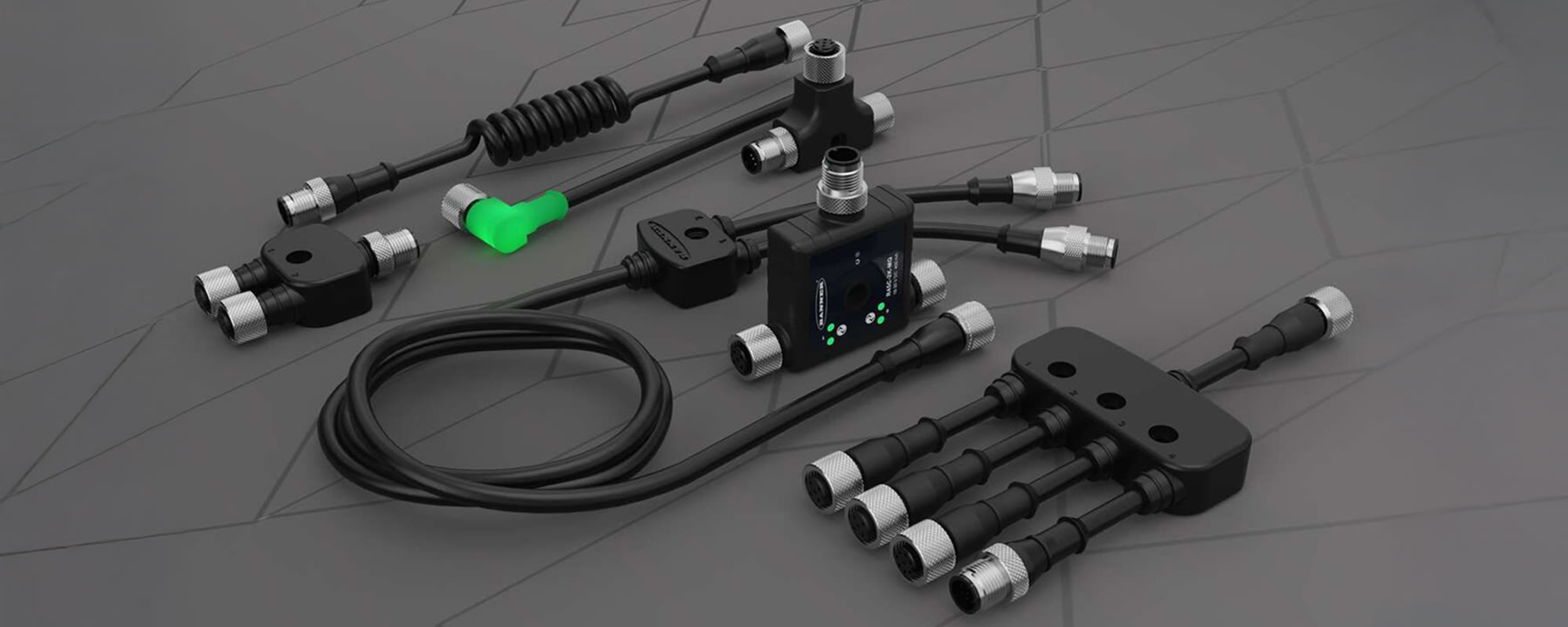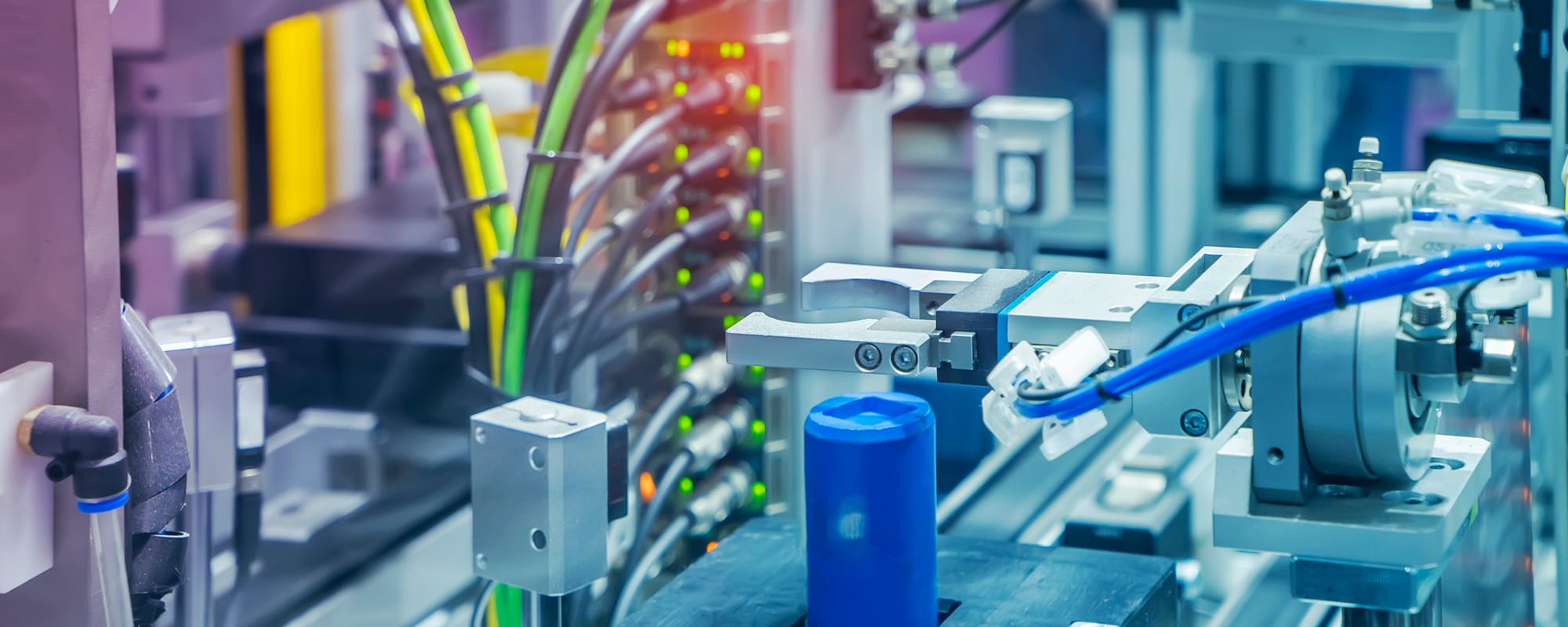Artificial intelligence (AI) and machine learning (ML) are revolutionizing predictive maintenance (PdM), enhancing efficiency, reducing downtime, and saving costs across industries. As we move toward Industry 5.0, integrating AI and ML in maintenance strategies is becoming increasingly crucial. This article explores how industrial businesses can leverage AI and ML to save thousands.
Alicia Keene, Technical Marketing Manager, RS
Unplanned downtime costs the world’s 500 largest companies approximately $1.4 trillion annually — equivalent to 11% of their total revenues, according to a 2024 report by Siemens. Imagine if you could predict and prevent these costly interruptions. What if you could foresee equipment failures before they happen and save millions in maintenance costs?
Staying ahead of equipment failures is crucial in today’s fast-paced industrial landscape, as they can halt production and disrupt supply chains. However, manufacturers struggle to modernize their maintenance programs. A top concern? Missing critical information.
According to an Eaton survey, skepticism about adopting predictive maintenance (PdM) remains high among continuous processors. Nearly 48% surveyed cited trusting PdM offerings as a challenge, compared to just 36% of discrete manufacturers. But now, with artificial intelligence (AI) and machine learning (ML), industries are experiencing a transformative shift toward more intelligent, proactive maintenance strategies.
Take our customer Atlantic Sapphire, for example — a leader in sustainable aquaculture. Faced with maintaining their essential systems, the company turned to a scalable predictive maintenance solution to uncover critical equipment insight and reduced overhead costs by more than $150,000 as a result.
As we move toward Industry 5.0, integrating AI and ML in maintenance strategies is becoming the new norm. Predictive maintenance powered by AI and ML is revolutionizing industries by reducing downtime and enhancing workplace satisfaction. Specifically, promising new AI-based predictive maintenance (PdM) technologies that can help reduce maintenance costs — boosting efficiency and safety across various industries. For instance, AI-based techniques, including machine learning and deep learning, can improve performance and accuracy in predicting equipment failures, anomalies, and remaining useful life (RUL).
From reactive to predictive: A paradigm shift
Imagine a world where your machines could whisper their secrets to you, predicting their own failures before they happen. Picture the savings — millions of dollars in unexpected downtime and repair costs, all avoided. This isn’t a scene from a sci-fi movie. It’s the cutting-edge reality of predictive maintenance powered by AI and ML.
Predictive maintenance is a proactive strategy that employs IoT sensors to monitor common assets like pumping systems, rotating machinery, motors, and conveyor systems. These sensors (including vibration, temperature, and pressure) track equipment in real-time to help detect potential issues early, enabling businesses to optimize maintenance schedules, reduce downtime, and lower repair expenses. Predictive maintenance also supports environmental, social, and governance (ESG) and industrial sustainability goals by promoting efficiency and reducing waste.
Traditional maintenance methods, like reactive and preventative maintenance, often lead to inefficiencies. Reactive maintenance addresses problems post-failure, causing unexpected downtime, while preventative maintenance is based on fixed schedules that may not align with actual machine conditions. Predictive maintenance overcomes these challenges by forecasting maintenance needs using real-time data, reducing production impact.
The evolution of predictive maintenance strategies also paves the way for prescriptive maintenance, which uses AI to determine when machines need repairing, what will fail, and why. This information helps facilities evaluate their options to minimize operational risks. In the next few years, prescriptive maintenance will become even more refined, minimizing the need for manual intervention by automatically ordering parts and scheduling maintenance activities.
In the meantime, it’s worth diving in and getting started with predictive maintenance now — while keeping an eye on feasibility and scalability. Starting with pilot projects on critical assets can help organizations gradually adopt PdM while minimizing risks. Piloting PdM with one or two appropriate assets or facilities helps create baseline predictive algorithms and ensures a smoother transition. Using a modular design allows flexible integration with existing systems and workflows. This approach ensures that PdM systems can be adapted to various environments and requirements.
Impressive results: A glimpse into the future
Maintenance teams across the globe face the significant task of anticipating equipment failures before they happen. In the heart of Florida, Atlantic Sapphire, a leader in land-based salmon farming, aimed to implement predictive maintenance to support their goal of producing 220,000 tons annually by 2031. They needed an effective solution for monitoring critical systems, particularly the outdoor equipment supplying saltwater to their fish tanks.
RS proposed a scalable, cloud-based condition monitoring system that uses advanced IIoT vibration sensor technology and machine-learning capabilities for reliable, cost-efficient asset monitoring. The system features easy sensor deployment, seamless integration into existing setups, and an intuitive interface for automated anomaly detection. It’s also customizable and adaptable to different environments and machine sizes, supporting organizations as their maintenance needs evolve.
Since real-time condition monitoring is crucial for staying ahead of failures, Atlantic Sapphire harnessed this system’s full potential, including alerts enabling early detection and intervention. By continuously collecting and analyzing data, the fully automated solution identified potential issues before they led to significant problems, preventing costly downtime and extending the lifespan of equipment. This real-time monitoring saved the company over $150,000 by avoiding a full-scale operation that would’ve required significant resources, including a crane and 12-person crew.
Atlantic Sapphire launched this undertaking to test a predictive maintenance solution within its challenging operational environment. This step showed the system’s practicality and scalability, supporting future expansion plans. By scaling this modular solution to other assets, the company aims to meet production goals while minimizing risks and maximizing efficiency. This illustrates how industrial firms can try adopting predictive maintenance through pilot projects without requiring significant investments or extra skilled labor.
Curious to learn how they did it? Download our full case study to learn more.
AI and ML: The brains behind enriched predictive maintenance
AI and ML are redefining predictive maintenance by analyzing large data sets to anticipate equipment failures. Machine learning excels in handling extensive data, like manufacturing sensor information, and providing insights that might be difficult or time-consuming for humans to uncover. By integrating AI and ML into predictive maintenance strategies, companies can achieve cost efficiency by reducing unexpected downtimes, improving productivity with longer machinery runtime, and extending equipment lifespan through proactive issue resolution.
Predictive maintenance modern technologies, including:
• IoT sensors: Continuously gather real-time data on parameters like vibration, temperature, and pressure from machinery to monitor equipment conditions.
• Data analytics: Process and interpret data collected by IoT sensors, offering actionable insights for maintenance teams.
• Machine learning algorithms: Analyze historical and real-time data to spot patterns for predicting equipment failures.
Once on-machine IoT sensors collect real-time performance data, this information is processed and analyzed to identify patterns and anomalies indicative of potential equipment failures. Then, the system predicts when and where a failure may occur, empowering maintenance teams to act proactively.
For instance, predictive analytics can be applied to CNC machines to identify abnormal patterns that precede failures. In the energy sector, ML algorithms can help predict potential issues like overheating transformers or misaligned wind turbines. PdM can also improve the reliability of fleets by predicting maintenance needs for vehicles, aircraft, or ships.
Several fault diagnosis techniques are integral to predictive maintenance:
• Condition monitoring tracks temperature changes in machinery to spot early faults.
• Vibration monitoring detects misalignment or loose components through sensors.
• Other methods include oil analyses, thermal imaging, and ultrasonic testing.
• Machine learning enhances these techniques by automating the analysis of large data volumes, making detecting and diagnosing faults easier.
Welcome to Industry 5.0: The next industrial revolution
Shifting the focus from pure automation and efficiency to enhancing human capabilities and collaboration, Industry 5.0 emphasizes the synergy between advanced technology and human ingenuity — fostering a more resilient industrial environment. This new era, which is closely linked to sustainability, is rapidly gaining momentum and highlights the positive impact of industry on society and our planet.
Unlike previous industrial revolutions prioritizing profit, Industry 5.0 focuses on optimizing the worker experience and contributing positively to the world. While it shares concepts with Industry 4.0 — including automation and the IIoT — Industry 5.0 reintroduces the human element, enabling AI and robotics to assist humans in making better decisions and performing complex tasks intentionally.
Predictive maintenance is crucial to Industry 5.0, as it enhances decision-making through valuable AI insights. Analyzing IoT sensor data provides maintenance teams with actionable machine intel and supports sustainability by minimizing waste and augmenting resource-intensive activities, driving industrial efficiency and innovation.
Future trends: What’s next in predictive maintenance?
AI and ML are redefining predictive maintenance across industries — driving efficiency, reducing costs, and enhancing operational reliability. For instance, in manufacturing, predictive maintenance monitors machines to reduce downtime and improve production processes. In the energy sector, it helps keep turbines, pumps, and pipelines running efficiently, which lowers operational risks.
Implementing AI-driven predictive maintenance comes with its own set of challenges:
• Data quality and quantity: Gathering and cleaning high-quality data is essential for accurate PdM modeling, but it can also be time-consuming and costly.
• Cybersecurity: Ensuring the security of data collected from sensors and other sources is crucial to prevent cyberattacks. Blockchain technology ensures data integrity and enhances the security of PdM data.
• Integration issues: Seamlessly integrating predictive maintenance systems with existing infrastructure can be complex and requires careful planning. Modular design allows flexible integration with existing systems and workflows, using standard interfaces and protocols.
• Need for skilled workers: Successful implementation of AI-driven predictive maintenance requires skilled personnel who can manage and interpret the data and maintain the systems.
Predictive maintenance is evolving with several trends:
• Advanced analytics: Leveraging big data and sophisticated algorithms to provide deeper insights into equipment health and performance. Advanced analytics, including big data analytics and predictive data analysis, enhance the accuracy and comprehensiveness of PdM systems.
• Edge computing: Enabling real-time data processing at the source, reducing latency and improving decision-making speed, while cloud computing manages large datasets for historical analysis for efficient data processing and storage.
• Sophisticated AI models: Developing more accurate and efficient predictive techniques that can work with smaller data samples and analyze diverse types of information, such as images and sensor data.
The future of predictive maintenance is set to be shaped by:
• Digital twins: Digital twins create virtual replicas of physical assets, facilitating real-time simulations and predictions of future outcomes to improve maintenance and asset management activities.
• Prescriptive maintenance: Building on predictive maintenance, prescriptive maintenance uses AI to not only predict failures but also recommend corrective actions, further optimizing maintenance processes.
• Integration with IoT: Integrating IoT devices with predictive maintenance systems will enhance remote monitoring and real-time data collection, improving overall maintenance strategies.
As AI and ML technologies advance, their integration into predictive maintenance will become more widespread, driving significant improvements in efficiency, cost savings, and operational reliability across various industries.
Looking ahead: The future of AI in maintenance
Imagine a world where your maintenance strategy is proactive, efficient, and cost-effective. With AI and ML, this is not just a possibility — it’s a reality.
Predictive maintenance, especially when powered by AI and ML, modernizes industries by enhancing operational efficiency and reducing downtime. Consider the story of Atlantic Sapphire. Faced with the daunting challenge of maintaining critical systems, they turned to a scalable PdM solution to get started. The result? They averted a potential disaster and saved over $150,000.
By adopting AI-driven predictive maintenance, companies can achieve significant cost savings, improve operational reliability, and stay ahead of potential equipment failures. As we move toward Industry 5.0, integrating AI and ML in predictive maintenance will continue to evolve, offering even more game-changing benefits and opportunities for innovation.
Intrigued? Download our exclusive case study to uncover the full story and learn how you can reimagine your maintenance approach.
Unlock the full story: Download our case study

Ready to modernize your maintenance strategy? Download our full case study to see how Atlantic Sapphire saved over $150,000. Discover the power of predictive maintenance — download today and start saving on operational costs.







